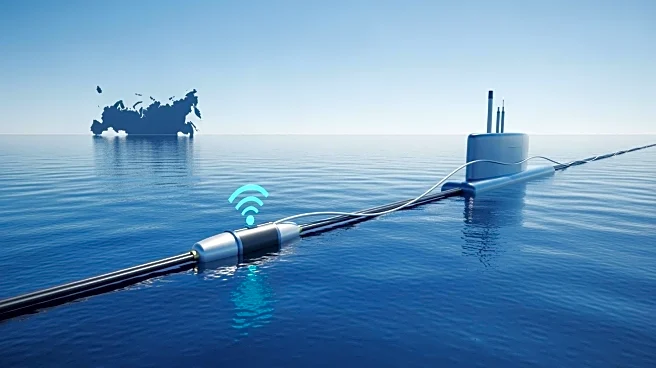What's Happening?
A report by Capgemini Research Institute emphasizes the emergence of 'new-gen supply chains' characterized by agility, sustainability, and AI integration. The report, based on responses from 1,000 senior executives, identifies these supply chains as a top
priority for 70% of executives by 2025. It highlights the role of AI in boosting productivity and transforming supply chain frameworks. The report also discusses the importance of sustainability, with 76% of organizations having comprehensive strategies in place. Additionally, it addresses geopolitical risks affecting global sourcing decisions, with regions like Mexico, Turkey, and Russia identified as high-risk areas.
Why It's Important?
The transition to new-gen supply chains is crucial for companies to remain competitive in a rapidly changing global market. The integration of AI and sustainable practices not only enhances efficiency but also reduces costs and delivers long-term value. As geopolitical risks continue to impact global sourcing, companies are reorienting their strategies to mitigate these challenges. The report's findings underscore the need for businesses to adopt flexible and resilient supply chain models to navigate future uncertainties.
What's Next?
Companies are expected to continue investing in AI and sustainable practices to enhance their supply chain operations. The report suggests that businesses should focus on building resilience, managing risks proactively, and fostering collaboration to create competitive supply chains. As geopolitical tensions persist, companies may explore multi-sourcing and regionalization strategies to diversify their supply chains and reduce dependency on high-risk regions.
Beyond the Headlines
The shift towards new-gen supply chains could lead to significant changes in procurement and logistics practices. The adoption of AI and digital tools may require companies to invest in workforce training and development. Additionally, the focus on sustainability could drive innovation in product design and packaging, further aligning business operations with environmental goals.














